Scientific articles
Atmospheric nitrogen deposition restricts future sub-arctic treeline advance in an individual-based dynamic vegetation model
Arctic high-latitude ecosystem composition is undergoing change, mainly advancement of trees into tundra and increased abundance and size of shrubs. We have studied how key climatic and environmental drivers (climate, nitrogen deposition and carbon dioxide) could affect distributions of major ecosystem types in the Torneträsk area using using a dynamic vegetation model (LPJ-GUESS). Our finding is that atmospheric nitrogen deposition can modulate a treeline advance driven largely by temperature increases.
Learn more: Gustafson et al., 2021
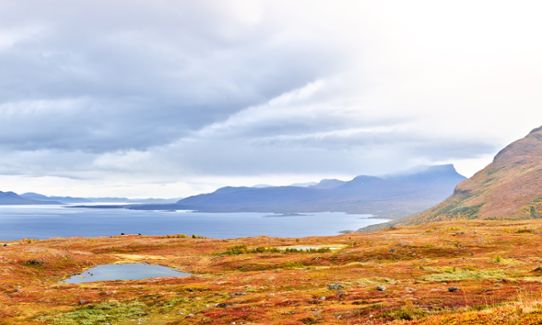
Innovative method to improve atmospheric deposition estimates for ecosystem impacts studies - future roadmap
High-quality estimates of atmospheric deposition are of vital importance for environmental impact studies, from mountain ecosystems to the whole world. A paper was published describing the priorities, needs and possibilities for a global production of timely, high-quality deposition estimates. The road-map describes a production that includes innovative, state-of-the-art measurement model fusion approaches combining ensemble modeling with observations, both from satellite and ground based measurements. An operational production of atmospheric deposition estimates on a national scale is currently only deployed by Sweden, while such methods also have been developed in North America (Canada and USA). The work was endorsed by the world meteorological organization.
Learn more: SMHI Environmental monotoring web site
Fu et al., 2022. Environ. Sci. Technol.
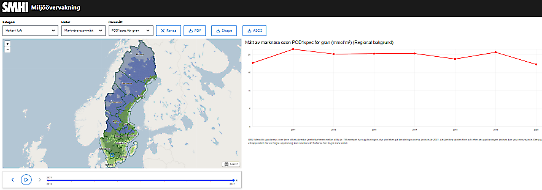
Exposure to smoke-plume from 2018 Swedish wild fires
Sweden experienced wide-spread wildfires in 2018, and the region Jämtland-Härjedalen was particularly impacted. This is a low-densely populated area. We modeled the emission, chemistry and transport of wildfire emissions in a nest from European to sub-national scale, to describe population exposure to particles (PM2.5) from the 2018 wildfire. We showed that the exposure led to a significant increase in daily asthma visits, with a relative risk of 1.68. This research was done in collaboration with the research project ACROBEAR.
Learn more: Tornevi et al., 2021;
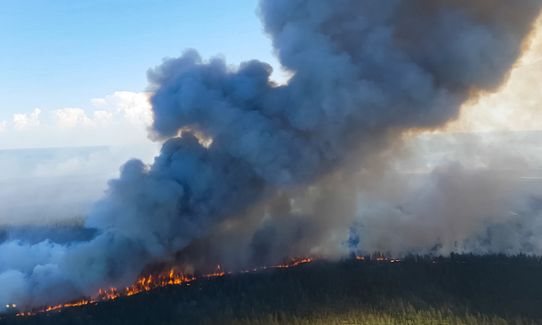
Exposure to near-surface ozone causes 7% of preterm births in Europe - problem remains in 30 years
Preterm birth is the largest contributor to neonatal mortality globally, and associated with several adverse health outcomes. A recent paper shows that 7% of European (EU30) preterm births in 2010 were due to maternal exposure to near-surface ozone.
Projected air quality improvements in 2050 due to emission decreases in current legislation causes the number of attributable cases to decrease by 30%, however with a penalty of climate change in southern and central Europe. The maternal exposure to near-surface ozone is expected to have a substantial impact on public health also in mid-21st century.
Learn more: Ekland et al., 2021. Environ. Res. Lett. 16.
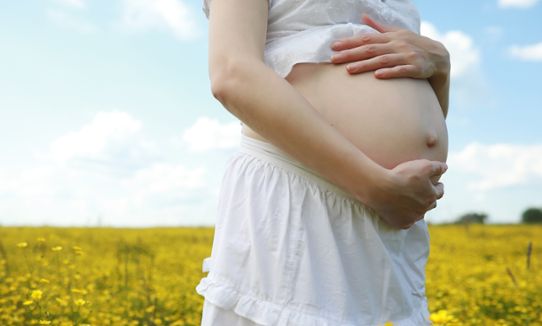
Model ensemble confirms decreasing exposure to fine particulate matter in Europe
A multi-model ensemble investigated the robustness of trends in fine particulate matter (PM2.5 and PM10) in Europe in comparison with observations for the period 2000-2010. This work was conducted in collaboration between teams in the framework of the Eurodelta-trends (EDTRENDS) initiative, under the Task Force of Measurement and Modelling (TFMM).
Both PM2.5 and PM10 concentrations decreased over the period, by 10% and 30% respectively across most of Europe. The models showed reasonable similarity in trends, with an inter-model variability of less than 30-40% in most parts of Europe except in the north and east. This shows that the modeled decrease in PM2.5 and PM10 is robust.
Learn more: Tsyro et al., 2022.
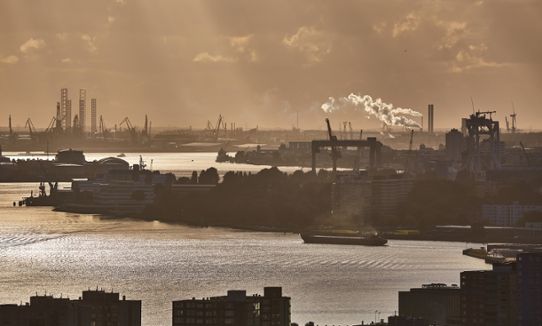
Improved simulation of precipitation with a new high-resolution climate model
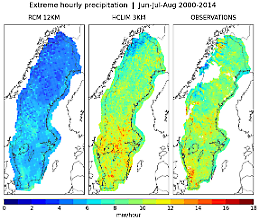
As the climate changes, climate models with high horizontal grid resolution become increasingly important as a basis for decision making. A new generation of such models, so called “convection-permitting” climate models have shown superior performance in simulating important aspects of the climate including extremes. We have published the first long-term (1998-2018) simulation over Fenno-Scandinavia with the HCLIM regional convection-permitting climate model. The results are very promising, with HCLIM (when compared with observations), providing a more realistic representation of precipitation with respect to coarser-scale climate models. Specific improvements include an increased and more realistic occurrence of higher intensity events, an improved timing and amplitude of the diurnal cycle, and an improved relative occurrence of snowfall versus rain in the Scandinavian mountains.
Learn more: Lind et al., 2020.
Heat wave promoting high ozone
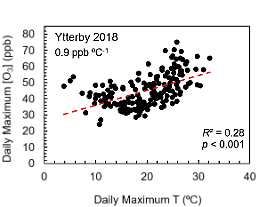
During the summer of 2018 large parts of Europe were affected by a long-lasting heat wave. Johansson et al (2020) showed that the heatwave conditions promoted high ozone concentrations in south-west Sweden. In comparison with the preceding 5-year period, it was also observed that the rate of increase in summer ozone concentration with temperature was stronger in 2018. A possible explanation for this pattern is that the dry conditions prevailing during the heatwave significantly reduced the stomatal uptake of ozone by vegetation, thus enhancing ground-level concentrations of ozone.
Learn more: Johansson et al., 2020
Mid-21st century Arctic shipping projected to cause negative impacts in the Nordic region
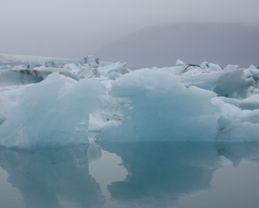
International initiatives have successfully brought down the emissions from shipping in Emission Control Areas, thus reducing the associated negative impacts on environmental and human health. The question is if this is enough to mitigate the expected future increase in shipping activities. We have studied the impact of future shipping scenarios on air pollution exposure in the Arctic and the Nordic region.
From our air pollution exposure calculations, we estimate that 850 people die prematurely yearly in the Nordic region due to shipping. This shipping contribution is projected to decrease to 700 cases by 2050 in a business as usual air pollution scenario based on the ECLIPSE V5 emission inventory, while a heavy fuel oil ban would decrease the shipping-related premature deaths to 550. A high-growth scenario in arctic shipping, with no additional regulation and high growth leads to a small increase in shipping-related premature deaths (900).
Learn more: Geels et al., 2021.
Additional scientific publications
Dell’Orso A., Kuzminsky, E., Bermejo-Bermejo V., Ruiz-Checa R., Alonso-Del Amo R., Meschini R. (2021). DNA integrity and ecophysiological responses of Spanish populations of Ulmus glabra to increasing ozone levels. Ecotoxicology 30,1098–1107.
Prieto Benítez, S., Ruiz Checa, R., Bermejo-Bermejo, V., Gonzalez-Fernandez, I., 2021. The Effects of Ozone on Visual Attraction Traits of Erodium paularense (Geraniaceae) Flowers: Modelled Perception by Insect Pollinators. Plants, 10, 2750. https://doi.org/10.3390/plants10122750
Prieto-Benítez, S., Ruiz-Checa, R., González-Fernández, I., Elvira S., Rucandio, I., Alonso, R., Bermejo-Bermejo V. The relative tolerance of Mediterranean perennial grasses to ozone and temperature may alter their competitiveness under future global change scenarios (aceptado con revisión Plants)
Chang-Espino M.C., Prieto-Benitez S., González-Fernández I., Araus J.L., Gómez-Camacho J.M., Bermejo-Bermejo V. Current ambient ozone levels mitigate the effect of Puccinia striiformis on wheat: Is Mediterranean wheat ready for pre-industrial background ozone levels? (enviado Science of Total Environment)
Reports
Sulfur in high-Alpine ice cores confirm the need for a high model resolution
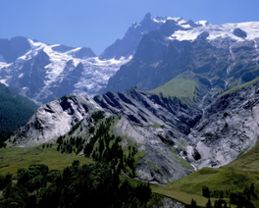
Atmospheric chemical transport modelling of sulfate in precipitation at different high-Alpine sites shows that depending on the spatial model resolution (50 km or 12 km), concentrations either differ (50 km) or compare well (12 km) to observations extracted from ice cores. This shows that the high-resolution modelling in this project improves the representation of deposition in high altitude areas.
Learn more: PSI annual report 2020.
Conference contributions
Andersson, Camilla. Ground-level ozone deposition to Sweden: food production. UN Food Summit 2021.
Andersson, C., Alpfjord Wylde, H., Bergström, R., Engardt, M., Langner, J., Karlsson, PE, Klingberg, J., Pleijel, H., Robertson, L. Changes to the northern latitude European vegetation exposure to ground-level ozone. ITM 2019. Oral presentation.
Andersson, Camilla, Danijel Belušić, Robert G. Björk Mats P. Björkman, Jukka-Pekka Jalkanen, Erik Kjellström, Petter Lind, Fredrik Lagergren, David Lindstedt, Paul Miller, Tinja Olenius, Håkan Pleijel, Gunhild Rosqvist. Future scenarios of climate and air pollution change in the scandinavian mountains and their potential impacts on biodiversity simulated with unprecedentedly high resolution. Swedish climate symposium, 2022.
Andersson, C., Engardt, M., Alpfjord Wylde, H. Long-term sulfur and nitrogen deposition to the Baltic Sea and surrounding terrestrial ecosystems based on fused measurements and modelling: a monthly reanalysis for the years 1983-2013. ITM 2019, Hamburg. poster presentation.
Andersson, Camilla, Rocio Alonso, Maurizio Bagnara, Danijel Belušić, Victoria Bermejo, Robert G. Björk, Mats P. Björkman, Augustin Colette, Florian Couvidat, Victoria Gil Alfonso, Ignacio Gonzalez, Thomas Hickler, Jukka-Pekka Jalkanen, Erik Kjellström, Fredrik Lagergren, David Lindstedt, Fernando Martin, Paul Miller, Tinja Olenius, Håkan Pleijel, Samuel Prieto, Antonio Spanu, Lena Strömbäck, Gunhild Rosqvist, Mark Theobald, Marta G. Vivanco. BioDiv-Support: scenario-based decision support tool for policy planning and adaptation to future challenges in biodiversity and ecosystem services. EGU 2021. Oral presentation.
Belusic, Danijel; Fuxing Wang; Petter Lind; Heiner Körnich; David Segersson; Jorge H. Amorim. Benefits of sub-kilometer dynamical downscaling for urban areas. Latsis symposium 2019. Oral presentation.
Garrido, JL., M.G. Vivanco, A. Colette , M.R. Theobald, JF. González-Rouco y V. Gil. Analysis of climate and air quality projections over the Iberian Peninsula. Informative video in Session: "Cities, climate and nature-based solutions". COP25, Madrid, Spain.
Garrido, JL., M.G. Vivanco, A. Colette , M.R. Theobald, JF. González-Rouco and V. Gil. Analysis of climate and air quality projections over the Iberian Peninsula. "CLIMATE CHANGE AND ATMOSPHERIC POLLUTION: TWO SIDES OF THE SAME COIN" - Climate Action at the UN Climate Change Conference, COP25".
Lind, P., D. Belusic, E. Toivonen, R. A. Pedersen, D. Lindstedt, F. Wang, A. Dobler, E. Kjellström: Future response of precipitation extremes over the Nordic region in a convection-permitting regional climate model. REKLIM 2019. Oral presentation.
Lind, Petter, David Lindstedt, Danijel Belušić, Fuxing Wang, Erik Kjellström, Andreas Dobler, Oskar Landgren, Erika Toivonen, Joni-Pekka Pietikäinen, Rasmus Anker Pedersen, Ruth Mottram, and Dominic Matte. 20-year simulations over the Nordic region with a convection-permitting climate model – benefits and added value of kilometer-scale resolution. EMS 2019. Oral presentation.
Lind, Petter; David Lindstedt; Danijel Belusic; Fuxing Wang; Erik Kjellström; Andreas Dobler; Oskar Landgren; Erika Toivonen; Joni-Pekka Pietikäinen; Rasmus A. Pedersen; Ruth Mottram; Dominic Matte. 20-year simulations over the Nordic region with a convection-permitting climate model – benefits and added value of kilometer-scale resolution. Latsis symposium 2019. Oral presentation.
Lindstedt, David; Petter Lind; Danijel Belusic; Fuxing Wang; Erik Kjellström; Andreas Dobler; Oskar Landgren; Erika Toivonen; Joni-Pekka Pietikäinen; Rasmus Anker Pedersen; Ruth Mottram; Dominic Matte. Validation of the snow climate in a regional climate model at 3 km grid spacing over Scandinavia. Latsis symposium 2019, poster presentation.
Olenius, T., et al. Nitrogen deposition to northern Europe with focus on the Baltic Sea and the Scandinavian Mountains: reanalysis and future projections. Swedish climate symposium, 2022.
Vivanco, Marta García and Juan Luis Garrido . Atmospheric pollution and trends in climate change scenarios. "Informative video in Session: "Cities, climate and nature-based solutions". COP25, Madrid, Spain.
Vivanco, Marta García and Juan Luis Garrido. Atmospheric pollution and trends in climate change scenarios. "CLIMATE CHANGE AND ATMOSPHERIC POLLUTION: TWO SIDES OF THE SAME COIN" - Climate Action at the UN Climate Change Conference, COP25".